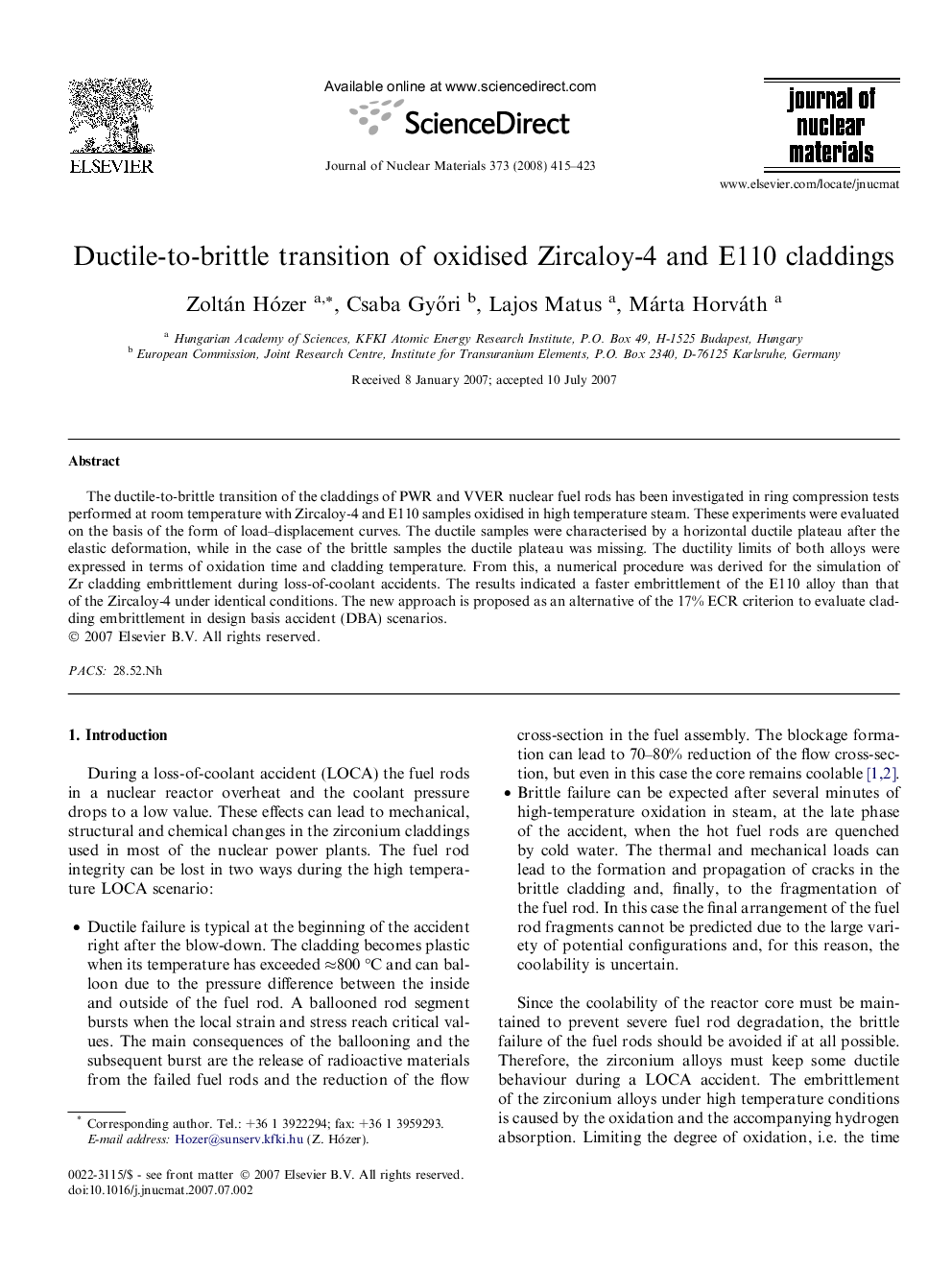| Article ID | Journal | Published Year | Pages | File Type |
|---|---|---|---|---|
| 1568812 | Journal of Nuclear Materials | 2008 | 9 Pages |
The ductile-to-brittle transition of the claddings of PWR and VVER nuclear fuel rods has been investigated in ring compression tests performed at room temperature with Zircaloy-4 and E110 samples oxidised in high temperature steam. These experiments were evaluated on the basis of the form of load–displacement curves. The ductile samples were characterised by a horizontal ductile plateau after the elastic deformation, while in the case of the brittle samples the ductile plateau was missing. The ductility limits of both alloys were expressed in terms of oxidation time and cladding temperature. From this, a numerical procedure was derived for the simulation of Zr cladding embrittlement during loss-of-coolant accidents. The results indicated a faster embrittlement of the E110 alloy than that of the Zircaloy-4 under identical conditions. The new approach is proposed as an alternative of the 17% ECR criterion to evaluate cladding embrittlement in design basis accident (DBA) scenarios.
